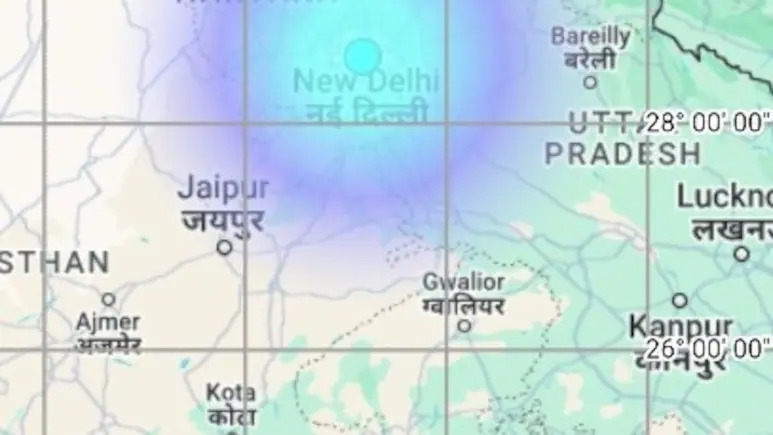“Delhi Earthquake: The earthquake struck at the heart of Delhi, with its epicenter just 5 km below the surface. This shallow depth likely intensified the tremors, making them more powerful and widely felt across the region.”

Delhi Earthquake Inshort:
- Magnitude 4.0 earthquake jolted Delhi-NCR early Monday.
- Epicenter located in Delhi at a shallow depth of 5 km.
- Residents felt strong tremors and heard a rumbling sound beneath their feet.
A powerful jolt shook Delhi and the National Capital Region (NCR) early Monday morning, February 17, 2025, as a 4.0 magnitude earthquake struck at around 5:36 AM.
The earthquake’s epicenter was right in Delhi, just 5 km beneath the surface. This shallow depth likely amplified the tremors, making them more intense and widely felt across the region.
The National Centre for Seismology (NCS) confirmed the earthquake’s details, pinpointing the epicenter at 28.59°N latitude and 77.16°E longitude.
Residents described powerful jolts, causing panic as many rushed out of their homes. The tremors were also felt across various regions of North India.
Prime Minister Narendra Modi addressed the situation, urging citizens to stay calm and remain alert. In a statement on X, he reassured that authorities were closely monitoring the situation and advised people to follow safety protocols, especially in preparation for any potential aftershocks.
Experts have highlighted that shallow earthquakes, originating just a few kilometers below the surface, tend to be more powerful than deeper ones. While no immediate damage or casualties have been reported, this earthquake serves as a stark reminder of the region’s susceptibility to seismic activity.
Delhi is situated in Zone IV of India’s seismic map, which indicates a history of moderate earthquakes. The city frequently experiences tremors from quakes originating in the Himalayas, Afghanistan, or China.
EXPLAINING THE RUMBLING SOUNDS
Many residents reported hearing rumbling noises during the earthquake, a common occurrence with shallow-focus quakes.
According to the US Geological Survey (USGS), earthquakes cause the ground to vibrate, generating seismic waves that travel through the air and transform into sound waves. The first waves produced during an earthquake, known as P waves, are similar to sound waves and can cause atmospheric vibrations.
When the epicenter is shallow, more energy is released to the surface, making the tremors stronger. High-frequency seismic waves can travel through the earth, sometimes producing audible rumbling sounds. Additionally, harder ground tends to amplify these sounds.